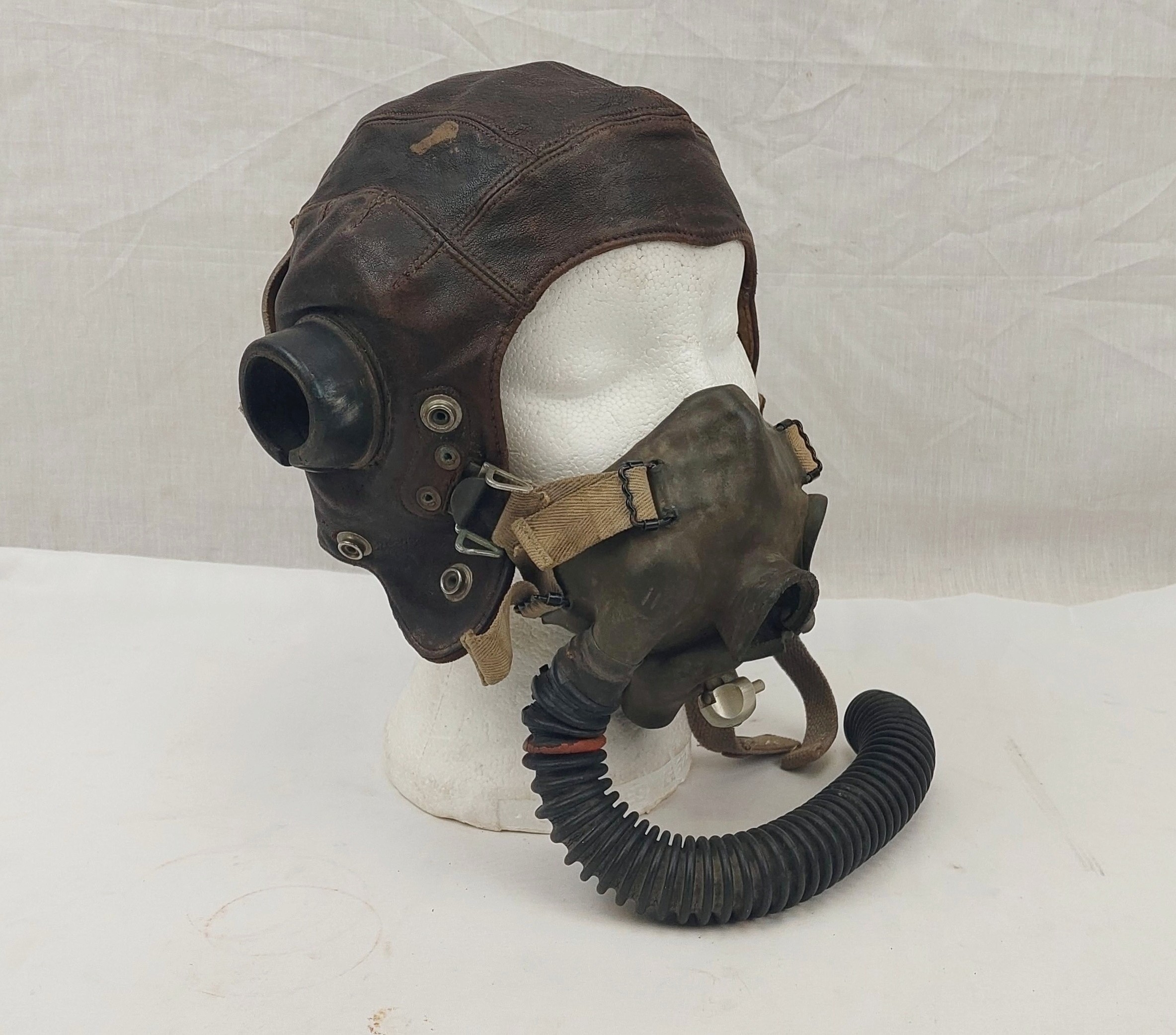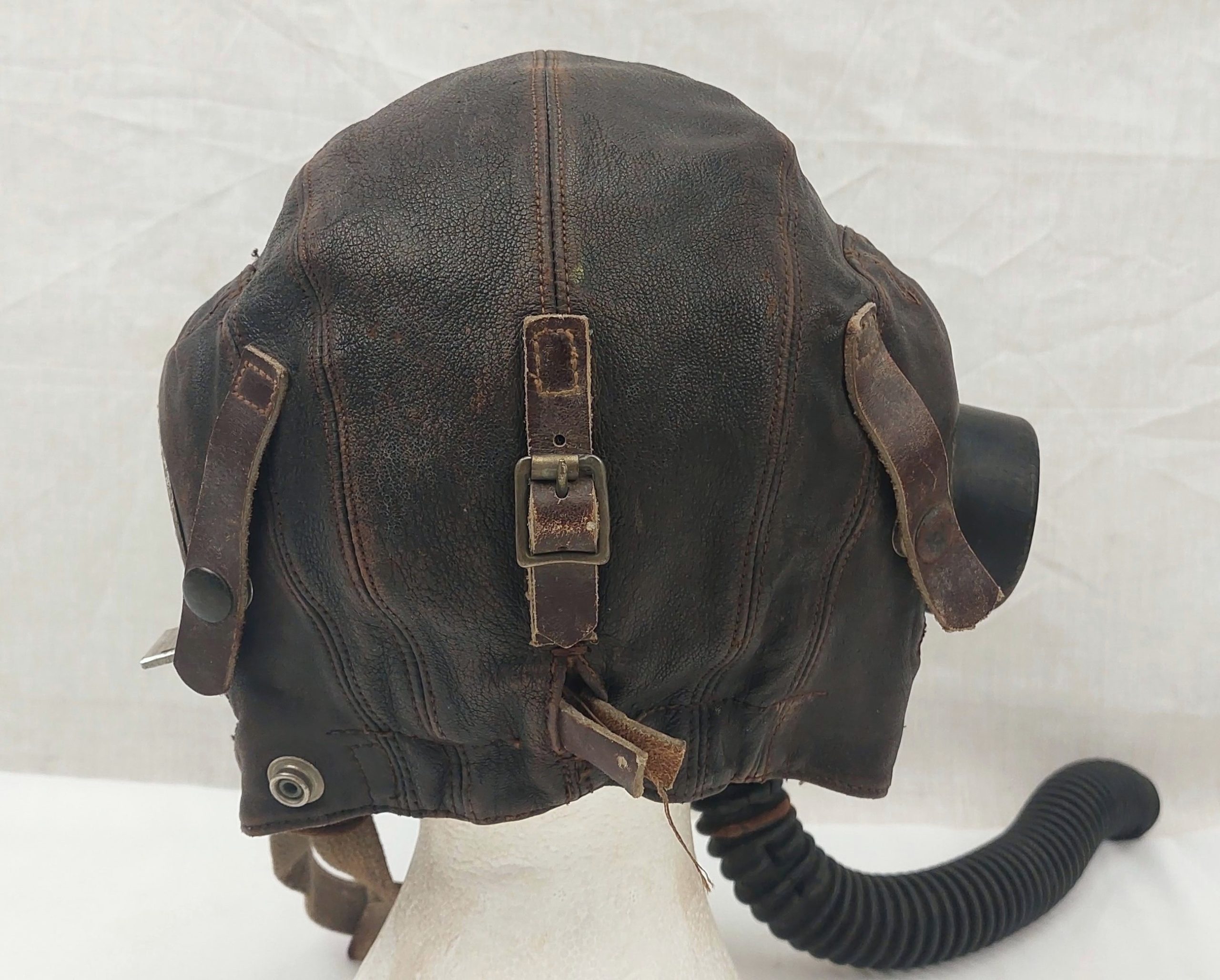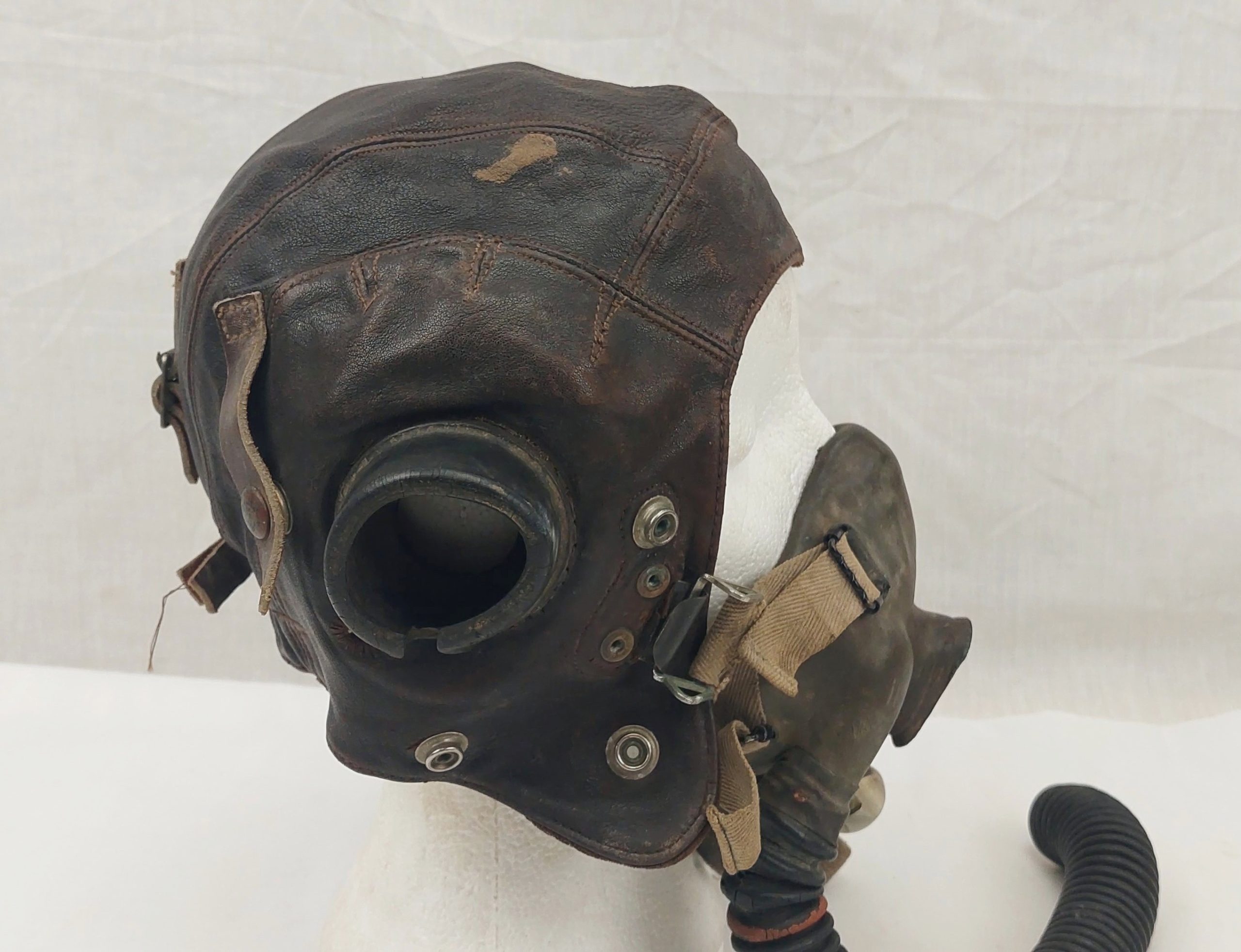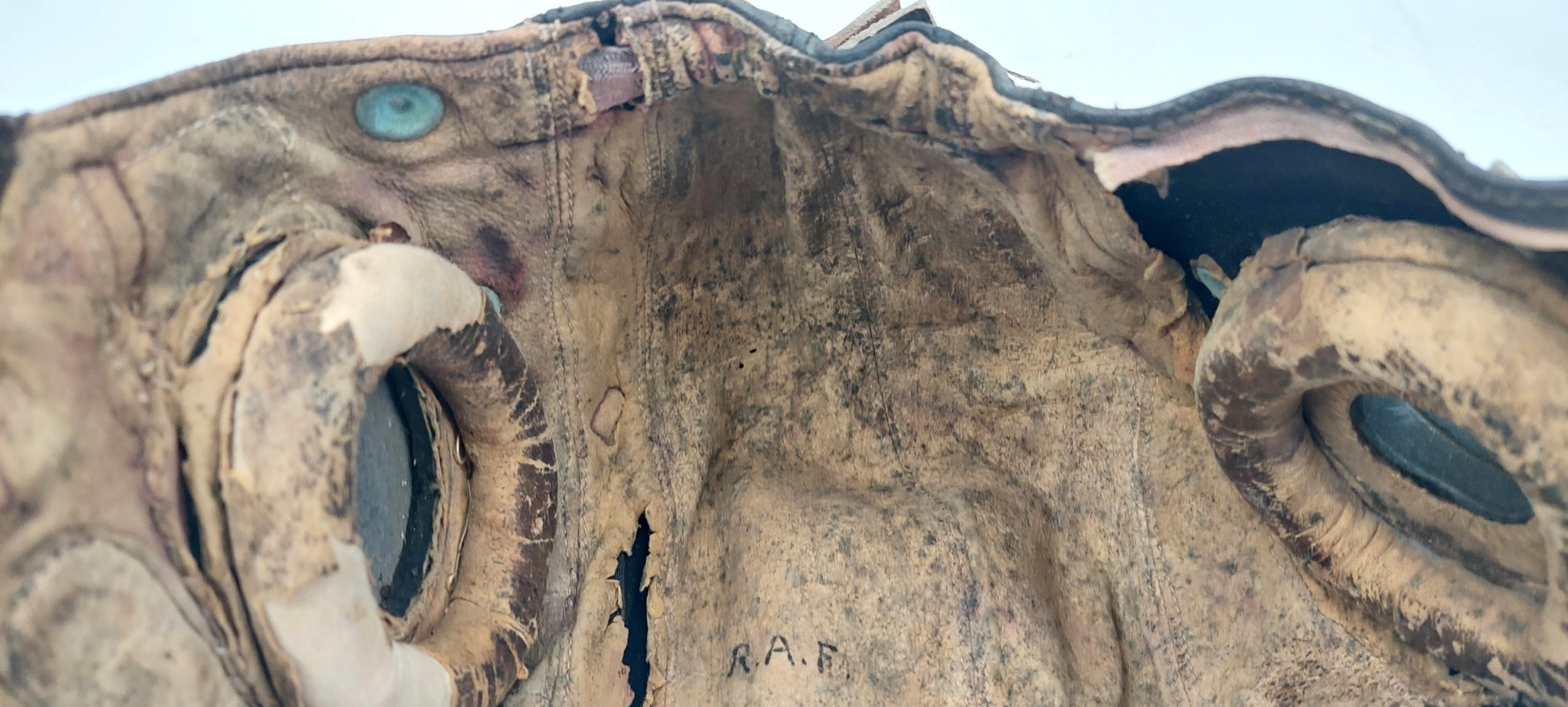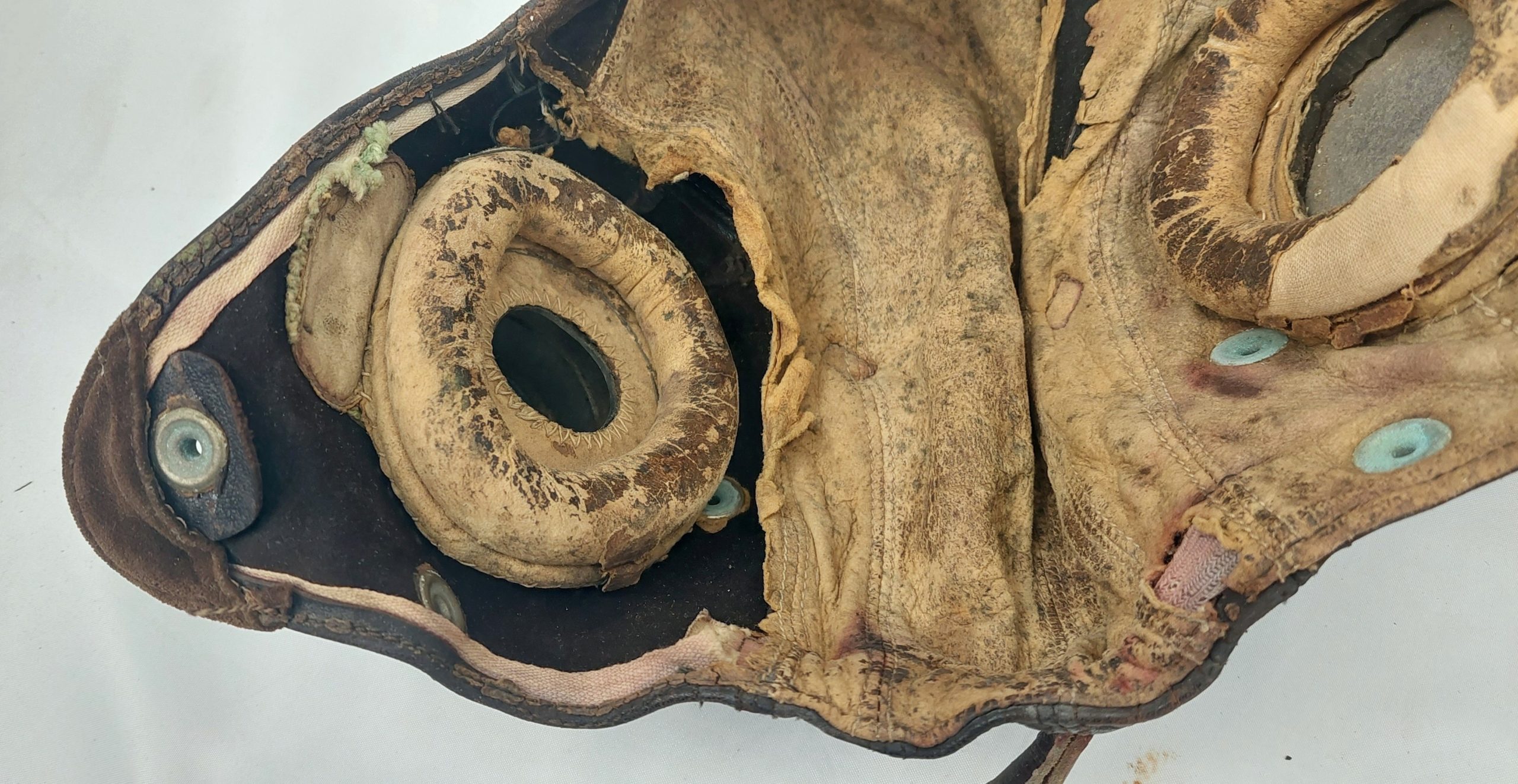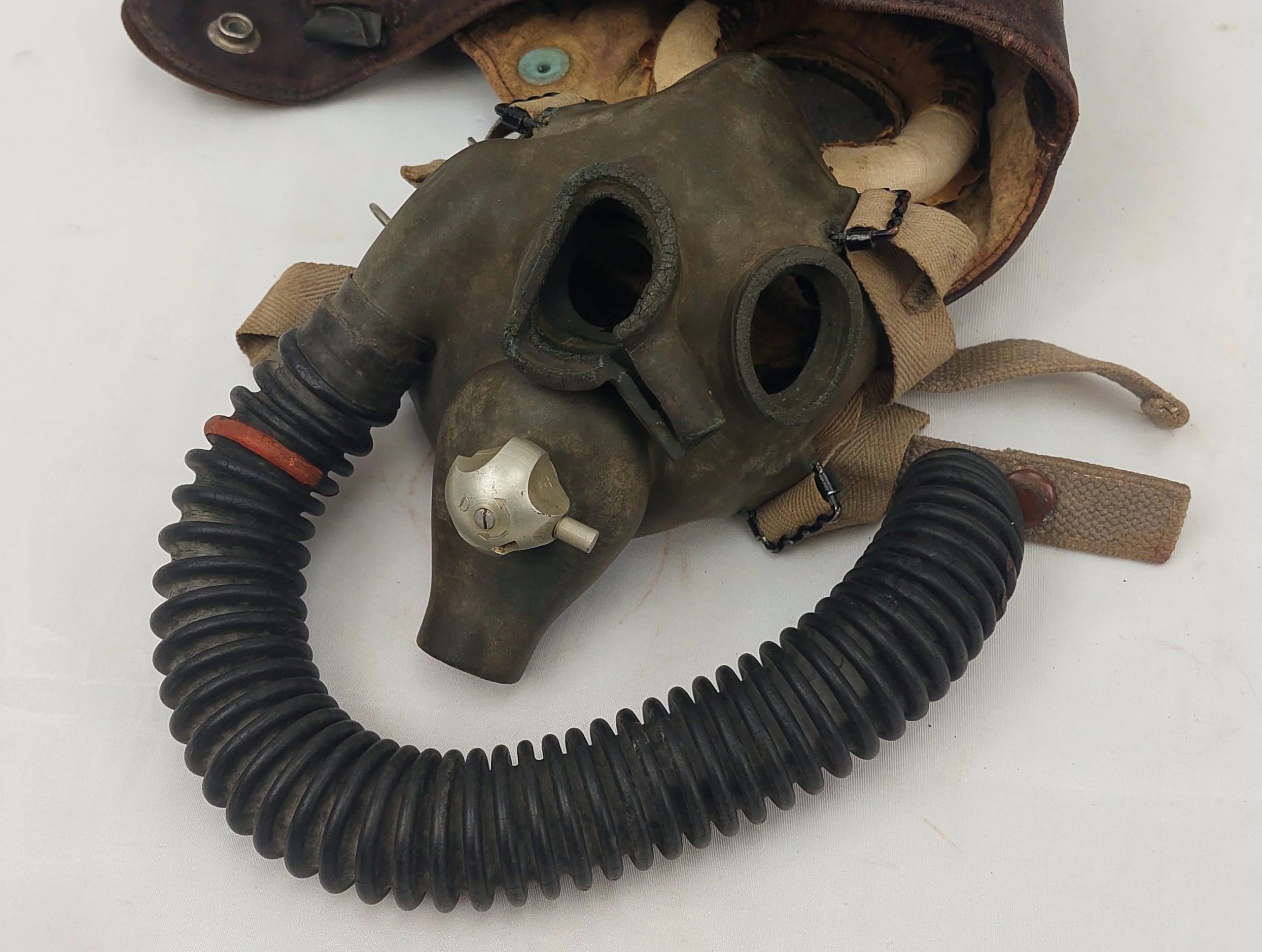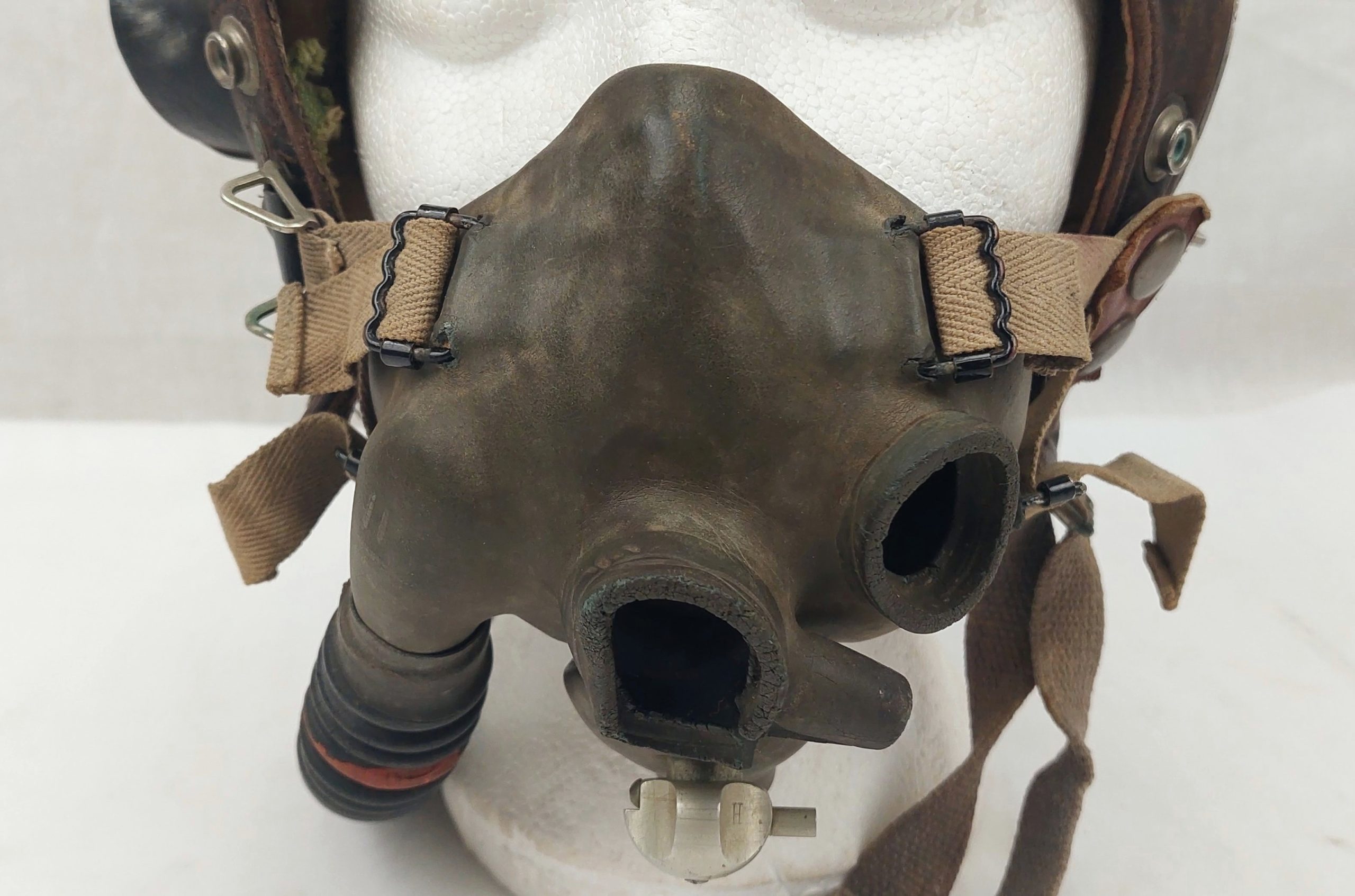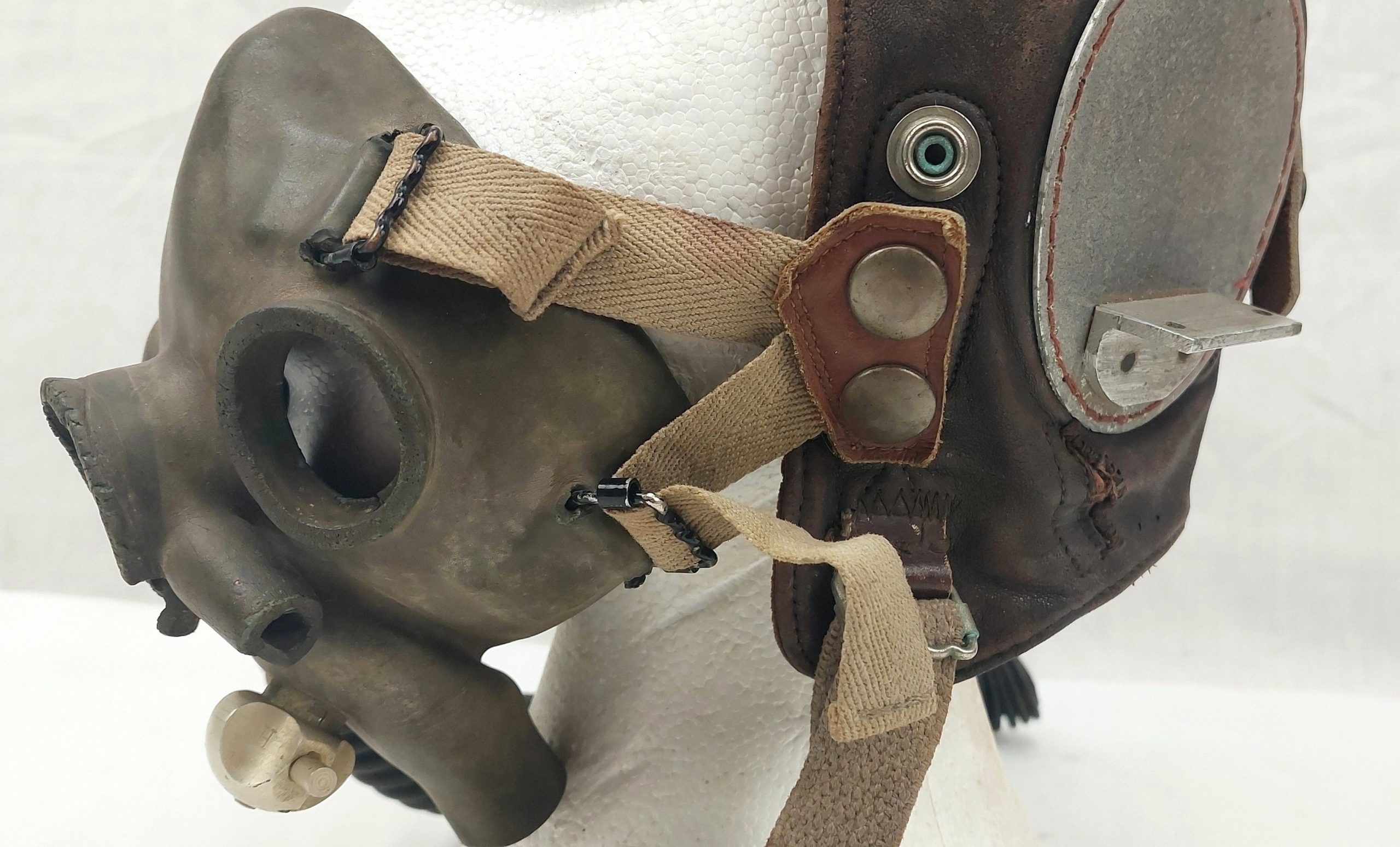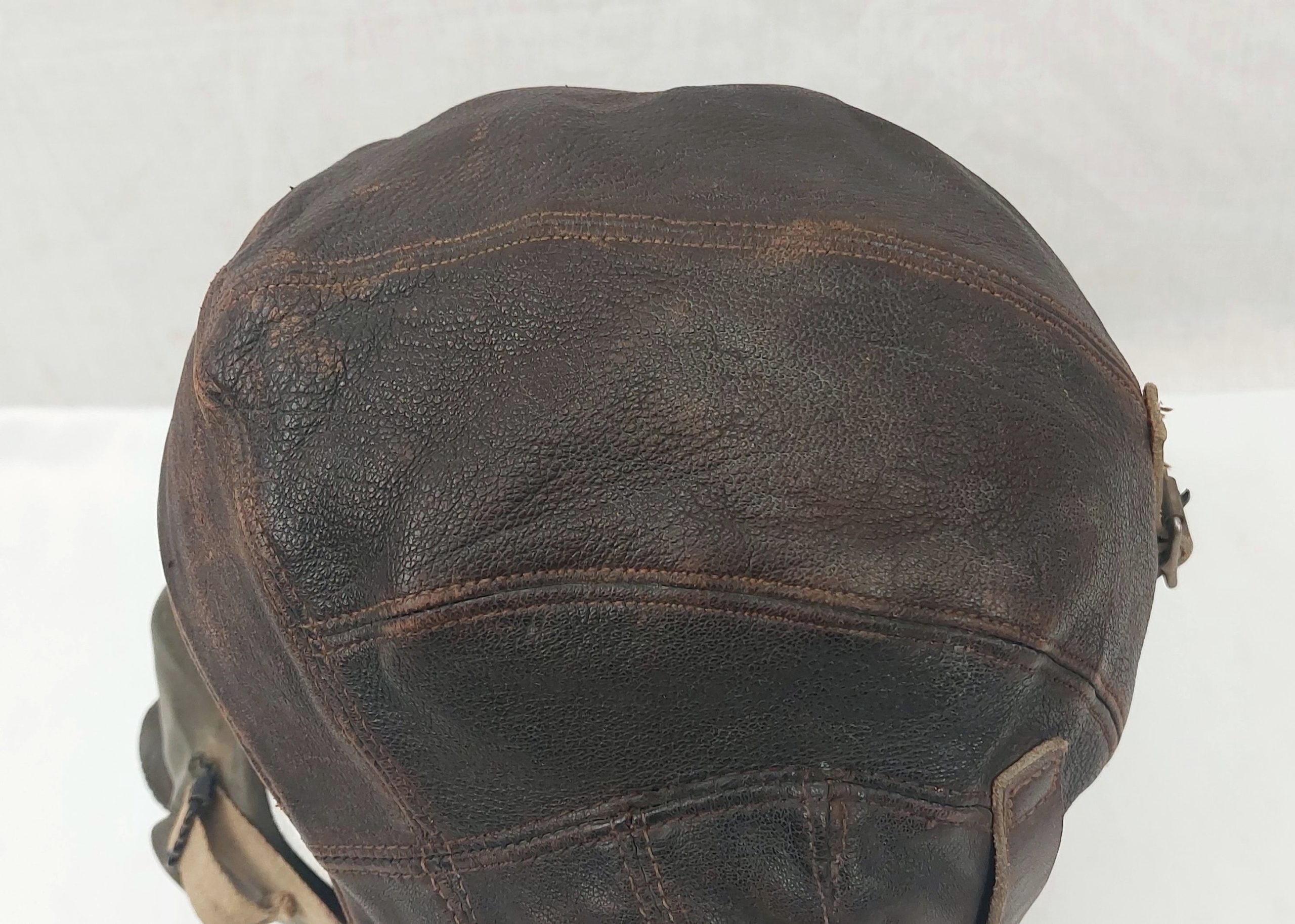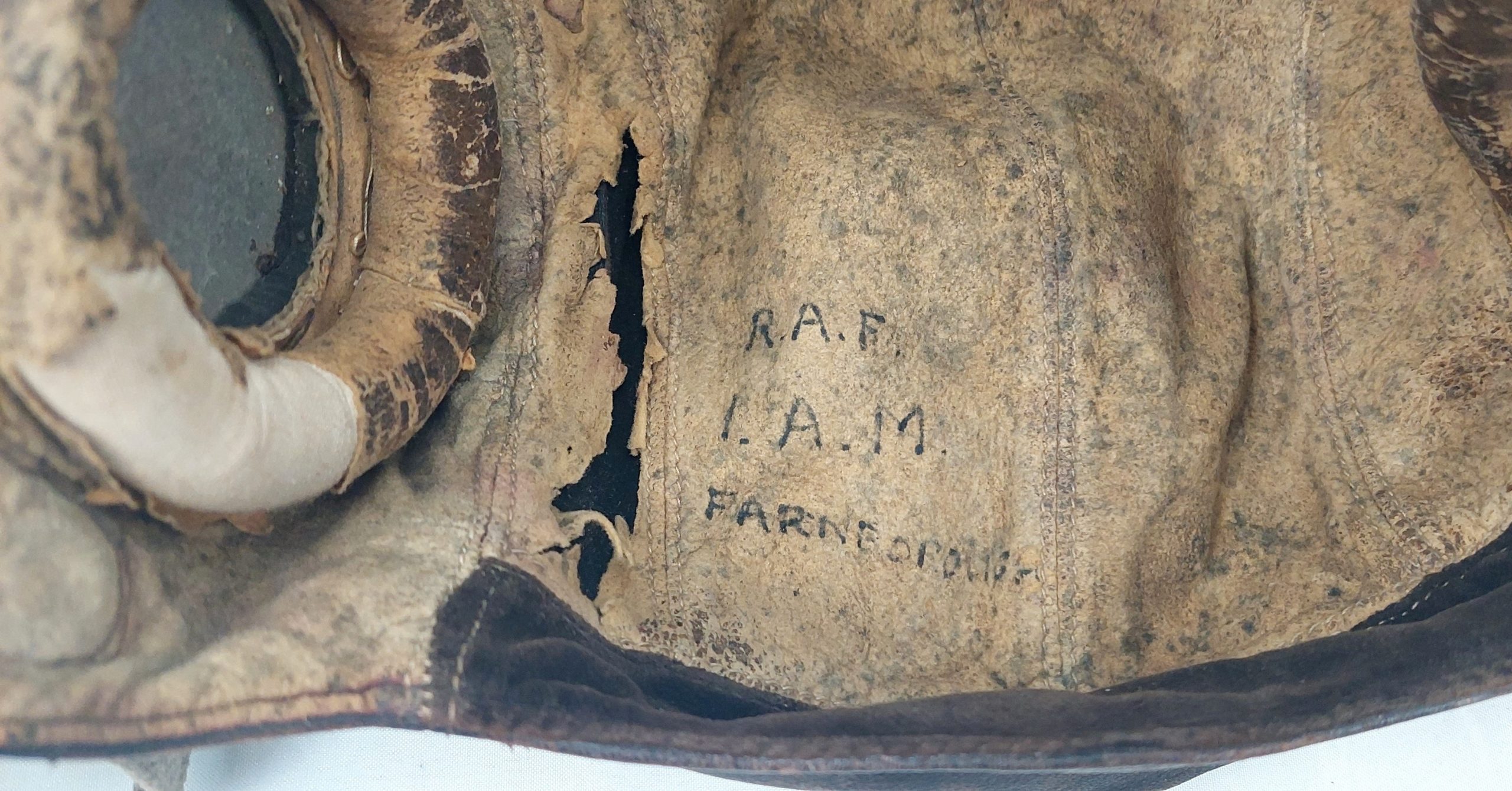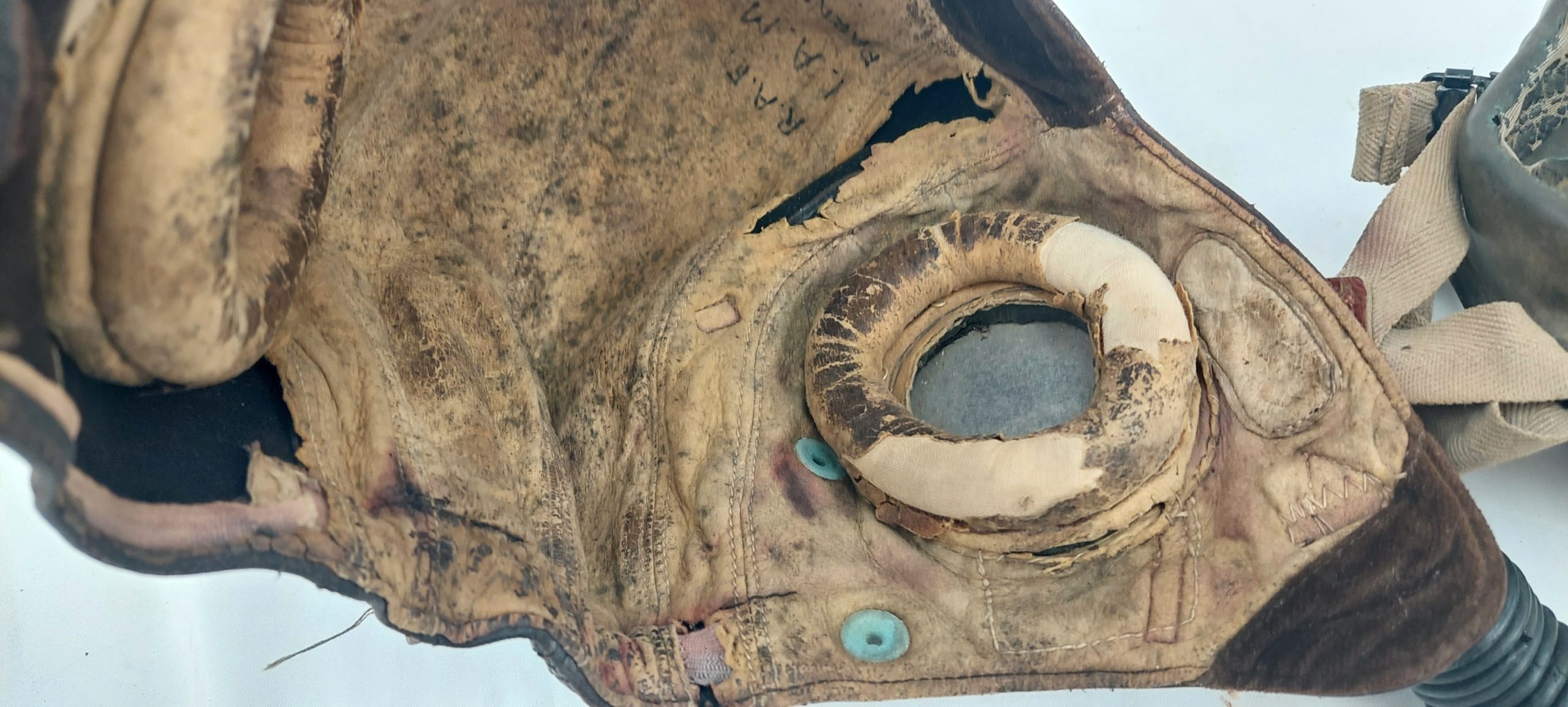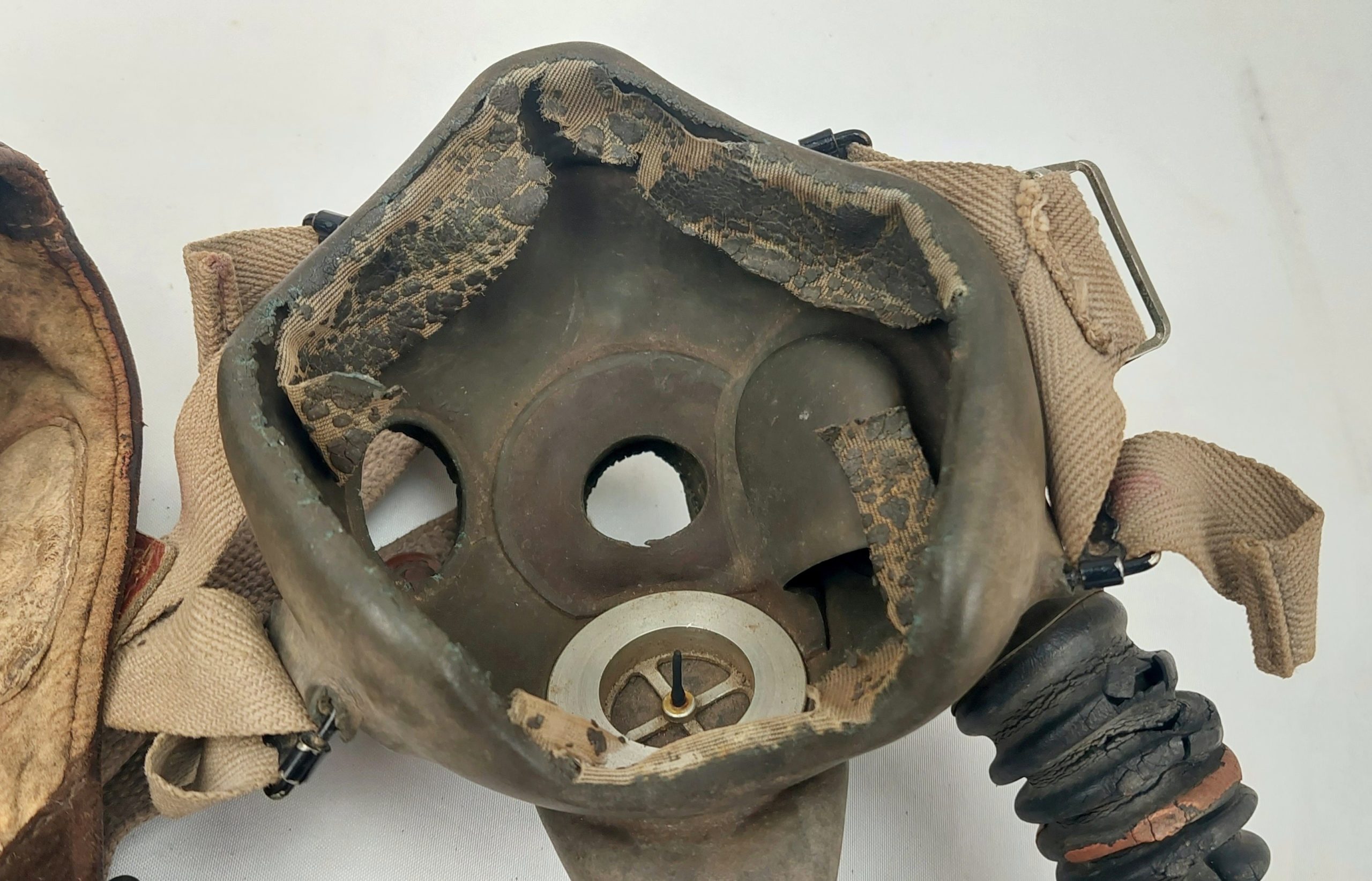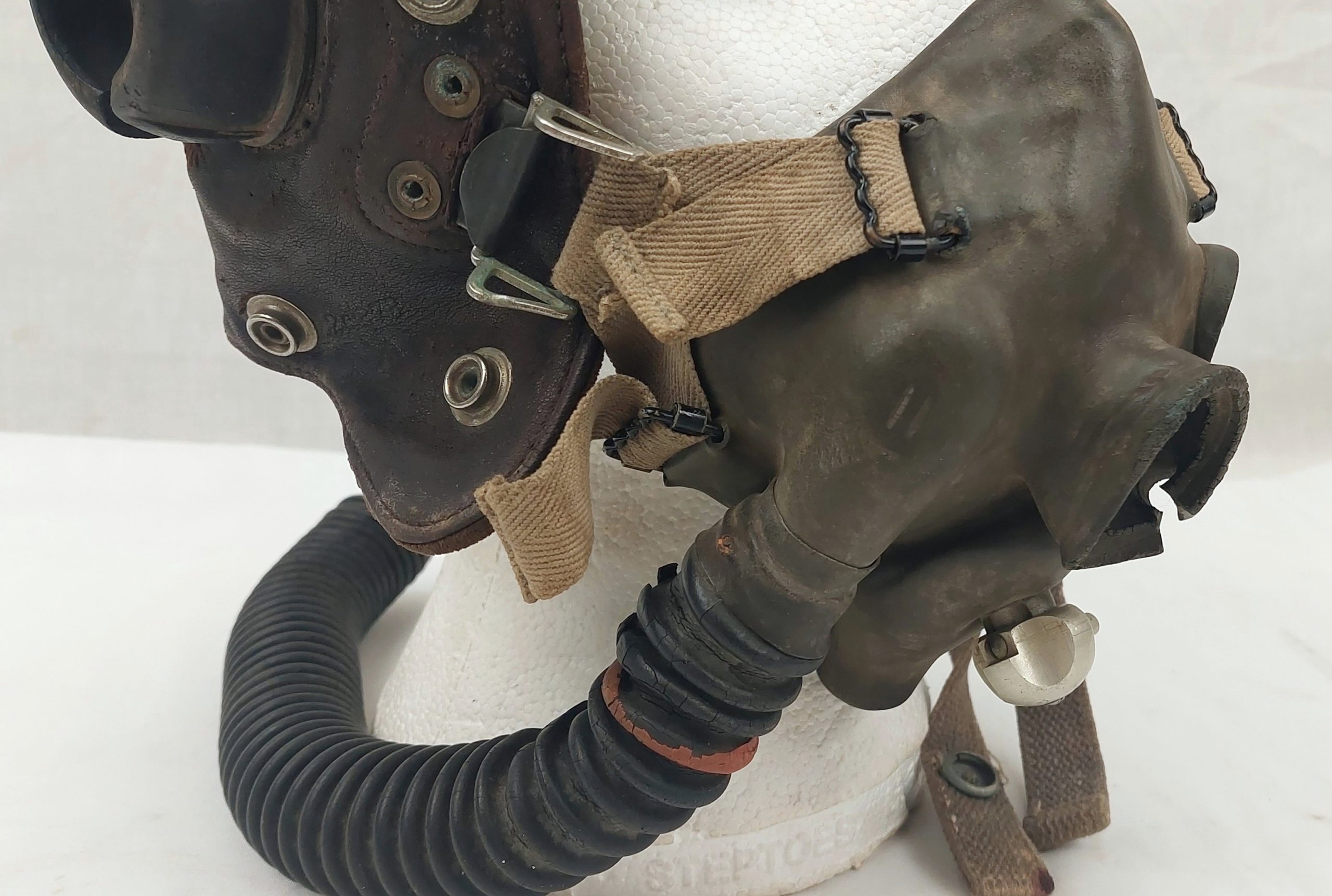~ Rare WW2 Type C Flying Helmet For RAFWAFFE RAE Farnborough ~
The inside is marked R.A.E. I.A.M. and Farborough.
What makes this helmet sure a rare example is the additional metal RAF artificer metal side plate. These were added so that the helmet could hold German avionic communication electronics from captured German aircraft.
~ No. 1426 Flight RAF ~
No. 1426 (Enemy Aircraft) Flight RAF, nicknamed “the Rafwaffe”, was a Royal Air Force flight formed during the Second World War to evaluate captured enemy aircraft and demonstrate their characteristics to other Allied units. Several aircraft on charge with the RAE Farnborough section were also used by this unit. The RAE facilities at Farnborough were used for the flight testing of German and Italian aircraft during the war.
Many crash-landed airframes were brought to Farnborough for examination, testing and cannibalisation of spare parts to keep other aircraft in serviceable condition. The main flight testing work was carried out by the Aerodynamics Flight of the Experimental Flying Department and the Wireless & Electrical Flight (W&EF), the latter responsible for evaluation and examination of radar-equipped aircraft later in the war.
~ No. 1426 (Enemy Aircraft) Flight ~
Heinkel He 111H, AW177 at RAF Duxford, prior to the establishment of 1426 Flight (Sept-Oct 1941)
The unit was established on 21 November 1941 at RAF Duxford, made up of a small group of pilots who had previously been maintenance test pilots with No. 41 Group RAF. Attached at first to 12 Group, its mission was to demonstrate captured types to Allied personnel and expose them to “the appearance, performance, and even the sound” of hostile types. Initially, it operated a Heinkel He 111 H (AW177) shot down in Scotland in February 1940, a Messerschmitt Bf 109 captured during the Battle of France (AE479) (turned over from the Air Fighting Development Unit) and a Junkers Ju 88A-5 (HM509) The Ju 88 was a more recent British acquisition after the pilot landed at night at RAF Chivenor in the belief it was an airfield in France-–the crew had made a navigational error after being deceived by a Meacon. A General Aircraft Monospar was also assigned to the unit for general communication tasks and collecting spare parts.
The aircraft in the unit changed as later marques came into the RAF’s hands in various ways, including capture by Allied troops, forced or mistaken landings by German pilots and defections. The flight co-operated with the RAF Film Unit, for which the usual British markings were removed and original German restored. Aircraft were then passed to the AFDU at (RAF Duxford 1940-1943) where they were extensively tested before passing them on to the flight. Several aircraft were lost to crashes or damaged and then cannibalised for spare parts. Others were shipped to America for further evaluation. In March 1943, the unit moved to RAF Collyweston. Beginning in early 1944, the flight made a round of U.S. Army Air Forces bases in Britain. After D-Day, the perceived need for the flight declined.
The flight ceased operations at Collyweston on 17 January 1945, reforming at RAF Tangmere on the same date, with unit codes EA, as the “Enemy Aircraft Flight” of the Central Fighter Establishment, which finally disbanded 31 December 1945.
~ No. 1426 (Photographic Reconnaissance) Flight ~
Following disbandment of No. 7 Squadron RAF in December 1955, four crews and their aircraft were detached and sent to the Aden during the “troubles”, to carry out patrols as No. 1426 (Photographic Reconnaissance) Flight at RAF Khormaksar, Aden on 1 January 1956 and disbanded at Khormaksar on 31 December 1956, being the last time the Avro Lincoln flew operationally as a bomber.
~ Condition ~
Please refer to the images for condition. The lining is worn, the mask hose has perished a bit, the leather is still supple.
~ Dimensions ~
The helmet is 21 cm (8.25 inches) tall when laid flat.
JA_3131121796



